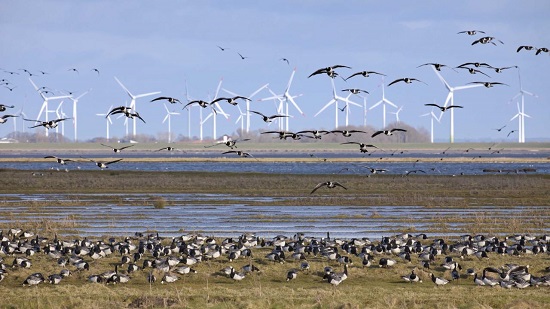 Friday, September 27, 2024
Friday, September 27, 2024  Friday, September 27, 2024
Friday, September 27, 2024 
One of my fondest memories from my first visit to Prince Edward Island in Canada was driving with friends through the eastern part of the island, admiring the bucolic scenery and the mesmerising wildlife. Travelling in a car of “tree huggers”, we were pleasantly surprised at the sight of statuesque wind turbines peppered between patches of woodland. It was exciting to see this small corner of eastern Canada going “green”.
At the time it didn’t occur to me that here was one of Mother Nature’s ironies: one of the most rapidly increasing forms of clean energy can also have deadly consequences for wildlife. Wind turbines – a technology that many view as a necessary component in the fight against climate change – can kill airborne animals, leaving lasting implications throughout the food chain.
From direct collision deaths to displacement from feeding or nesting areas, to habitat degradation or loss, wind farms can have negative impacts on biodiversity, with birds and bats being particularly affected.
The tug-of-war between wind turbines and wildlife preservation is alive and well in Souris, Prince Edward Island in Canada, where The Prince Edward Island (PEI) Energy Corporation wants to add seven new turbines to the 10 currently in place. This would include the use of larger turbines, both in height and in the area swept by their blades. While the province says the greater height of 175 metres, compared with the 125-150m existing turbines in the region, and larger blades allows for more energy production, both the size and the location of the wind turbines are causes for concern to the local PEI Wildlife Federation.
“These windmills will be some of the tallest in the world and will have adverse effects on birds and bats,” says Fred Cheverie, watershed coordinator of the Souris and Area Branch of the PEI Wildlife Federation. “It will be located in an area that is comprised of a series of wetlands that are nesting sites for many species of birds and other wildlife.”
According to Cheverie there are 52 vulnerable species of birds that pass through the area, as well as four endangered species. Bat populations on the island, too, are vulnerable having been decimated by white nose syndrome. “But we have some recovery in this area,” he adds, which would increase the likelihood of bat-turbine collisions.
The next publication deadline is Friday at noon
Join Construction Links Network